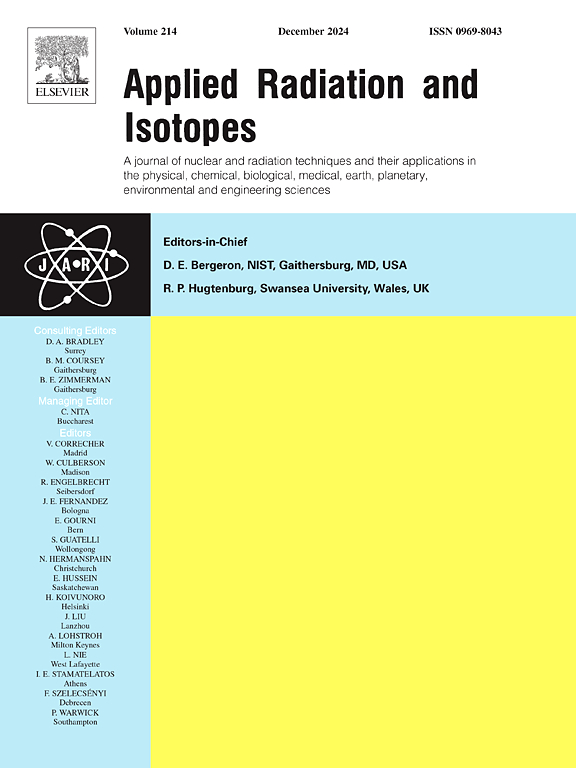Accelerator based-BNCT facilities worldwide and an update of the Buenos Aires project
IF 1.6
3区 工程技术
Q3 CHEMISTRY, INORGANIC & NUCLEAR
引用次数: 0
Abstract
Globally, there are several AB-BNCT facilities, either operational and already treating patients and others still under development. These facilities range from high-energy 30 MeV cyclotrons using the 9Be(p,n) reaction, medium-energy RFQ-DTL accelerators operating at 8–10 MeV with the same reaction, low-energy electrostatic machines (Tandem and single-ended) using the 7Li(p,n) reaction at approximately 2.5 MeV. Additionally, the low-energy ESQ accelerator developed in Argentina, employs the 9Be(d,n) or the 13C(d,n) reactions at 1.45 MeV. This paper presents updated insights into Argentina's AB-BNCT project while also providing a global overview of AB-BNCT developments.
全球基于加速器的bnct设施和布宜诺斯艾利斯项目的更新
在全球范围内,有几家AB-BNCT设施,要么已经投入运营并已在治疗患者,要么仍在开发中。这些设备包括使用9Be(p,n)反应的高能30 MeV回旋加速器,使用8-10 MeV反应的中能量RFQ-DTL加速器,使用大约2.5 MeV的7Li(p,n)反应的低能静电机器(串列和单端)。此外,阿根廷开发的低能ESQ加速器采用1.45 MeV的9Be(d,n)或13C(d,n)反应。本文介绍了对阿根廷AB-BNCT项目的最新见解,同时也提供了AB-BNCT发展的全球概况。
本文章由计算机程序翻译,如有差异,请以英文原文为准。
求助全文
约1分钟内获得全文
求助全文
来源期刊

Applied Radiation and Isotopes
工程技术-核科学技术
CiteScore
3.00
自引率
12.50%
发文量
406
审稿时长
13.5 months
期刊介绍:
Applied Radiation and Isotopes provides a high quality medium for the publication of substantial, original and scientific and technological papers on the development and peaceful application of nuclear, radiation and radionuclide techniques in chemistry, physics, biochemistry, biology, medicine, security, engineering and in the earth, planetary and environmental sciences, all including dosimetry. Nuclear techniques are defined in the broadest sense and both experimental and theoretical papers are welcome. They include the development and use of α- and β-particles, X-rays and γ-rays, neutrons and other nuclear particles and radiations from all sources, including radionuclides, synchrotron sources, cyclotrons and reactors and from the natural environment.
The journal aims to publish papers with significance to an international audience, containing substantial novelty and scientific impact. The Editors reserve the rights to reject, with or without external review, papers that do not meet these criteria.
Papers dealing with radiation processing, i.e., where radiation is used to bring about a biological, chemical or physical change in a material, should be directed to our sister journal Radiation Physics and Chemistry.
 求助内容:
求助内容: 应助结果提醒方式:
应助结果提醒方式:


